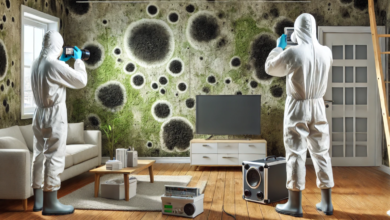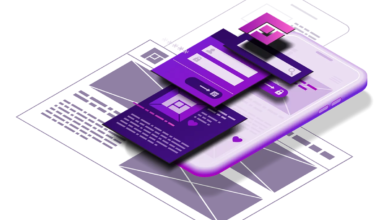
Multi Jet Fusion 3D Printing Ideas
In additive manufacturing, Multi Jet Fusion (MJF) 3D printing has become a catalyst for innovation, empowering designers, engineers, and manufacturers with a versatile toolset. This cutting-edge technology opens the door to creative possibilities, offering unique solutions across various industries. Let’s delve into some innovative ideas and applications that showcase the transformative power of Multi Jet Fusion 3D printing.
1. Personalized Wearable Technology:
Utilize Multi Jet Fusion to create custom-fit smartwatches, fitness trackers, or other wearable devices. The ability to print intricate and personalized designs ensures a comfortable and stylish user experience.
2. Advanced Footwear Design:
Leverage MJF to craft customized shoe soles that cater to an individual’s unique foot structure. This not only enhances comfort but also allows for the integration of innovative features, such as impact-absorbing patterns or personalized arch support.
3. Optimized Cooling Systems for Electronics:
Engineer intricately designed cooling components for electronic devices using Multi Jet Fusion. The technology’s precision enables the creation of efficient and customized cooling solutions for enhanced performance and longevity of electronic gadgets.
4. Dental Implant Prototyping:
Revolutionize the field of dentistry by using MJF to prototype dental implants with precise fits and patient-specific designs. This application ensures optimal comfort and functionality, marking a significant advancement in dental prosthetics.
5. Modular Furniture Design:
Explore innovative furniture designs with Multi Jet Fusion, creating modular components that seamlessly fit together. This allows for customizable and adaptable furniture solutions catering to evolving spatial needs.
6. Customized Automotive Interior Components:
Transform the driving experience by 3D printing personalized automotive interior components. From customized dashboard elements to tailored storage solutions, Multi Jet Fusion 3d Printing can bring a new level of comfort and style to vehicle interiors.
7. Interactive Educational Models:
Enhance learning experiences with interactive educational models created through MJF. From intricate biological models to historical artifacts, 3D printing allows for the creation of detailed and accurate teaching aids.
8. Customized Medical Devices:
Extend the applications of MJF to create personalized medical devices such as hearing aids, braces, or even ergonomic surgical tools. The ability to tailor these devices to individual patient needs enhances comfort and overall effectiveness.
9. Architectural Prototyping:
Revolutionize architectural design by using Multi Jet Fusion to create intricate scale models of buildings. Architects can experiment with complex geometries and detailed structures, providing a tangible representation of their designs for better visualization and client presentations.
10. Prosthetic Limbs with Embedded Sensors:
Combine the precision of MJF with sensor technology to develop prosthetic limbs with embedded sensors. This innovation allows for more natural movement and interaction, significantly improving the quality of life for amputees.
Conclusion:
Multi Jet Fusion 3D printing introduces possibilities for creating personalized and innovative solutions across various industries. By harnessing the precision and versatility of MJF, designers, and engineers can push the boundaries of what’s possible, unlocking new frontiers in customization and functionality. These ideas showcase the potential of Multi Jet Fusion to revolutionize product design and manufacturing processes in exciting and practical ways.
3D Printed Injection Molds
The integration of 3D printing and injection molding through Freeform Injection Mold (FIM) resin, as described by RapidMade, indeed presents an innovative approach to low-volume manufacturing. This hybrid technology offers several advantages over traditional 3D printing methods:
Material Diversity and Cost Efficiency:
- By leveraging the extensive range of injection molding resins, FIM technology allows access to a broader spectrum of materials compared to 3D printing. This is crucial for meeting specific material requirements in manufacturing.
- The cost benefits of using injection molding resins for 3D printing molds can be significant, particularly when compared to the cost and limitations associated with traditional 3D printing materials.
Mechanical Properties:
- Injection molding, with its high pressure and density, produces parts with superior mechanical properties compared to many 3D printing processes. The isotropic nature of molded parts ensures consistent and reliable performance.
- The FIM process addresses the limitations of certain 3D printing methods, such as poor z-layer adhesion or low density, which can lead to structural weaknesses in the final product.
Surface Finish and Detail:
- Utilizing DLP resins like the FIM resin in the liquid vat process allows for extremely thin layers, high detail, and a smooth finish. This results in molded parts with a level of detail and surface quality comparable to SLA 3D printing.
- The ability to translate textures from the digital file to the mold enhances the aesthetic appeal and functionality of the final molded parts.
Lead Time Reduction:
- The capability to print molds overnight accelerates the overall production timeline. This rapid turnaround time can be a critical advantage in meeting tight project schedules and responding swiftly to market demands.
Customization and Prototyping:
- FIM technology enables quick and cost-effective production of custom molds, making it an ideal solution for prototyping and low-volume manufacturing. This can be particularly advantageous for industries requiring rapid iterations and customization.
While FIM presents a promising hybrid approach, it’s important to continue refining the technology and exploring its potential applications across different industries. As with any emerging technology, ongoing developments and feedback from users will likely contribute to further advancements in the integration of 3D printing and injection molding.
Wall Thickness Guidelines:
- Maintain a consistent wall thickness ranging from 0.060″ to 0.200″ for optimal part quality.
- Apply fillets to sharp edges and joints to reduce stress during shrinkage, preventing warping caused by concentrated mass contraction.
Parting Line and Draft Angles:
- Carefully consider mold separation to avoid interference or undercuts, which hinder part removal.
- Implement a half-degree draft angle and ejector pins for efficient part ejection in repeat production molds, minimizing upfront engineering costs.
Ribs and Gussets for Enhanced Strength:
- Utilize ribs to enhance part strength and stiffness, allowing for thinner walls and reducing material use and cooling time.
- Design ribs and gussets to be 50-60% of the wall thickness to improve dimensional stability, minimizing issues like sink without adding extra cost.
Tolerancing and Limitations:
- Acknowledge that 3D printing accuracy is not on par with machining; printed molds typically hold tolerances between 0.010″ to 0.015″, compared to 0.001″ to 0.005″ for milled production molds.
- Account for resin shrinkage in molding processes, adjusting for additional part variance. For highly demanding drawings, post-machining may be necessary.
Finish Options and Limitations:
- Understand that 3D printing for molds has limited finish options compared to traditional methods.
- In-model textures are effective, but customers need to provide them, as chemical etch finishes offered by conventional injection mold tooling companies may not be available.
Ongoing Developments:
- Stay informed about additional technical process information, which will be validated and published in the near future.
- Recognize that this is a dynamic and evolving process, and ongoing advancements may bring new possibilities and refinements.



